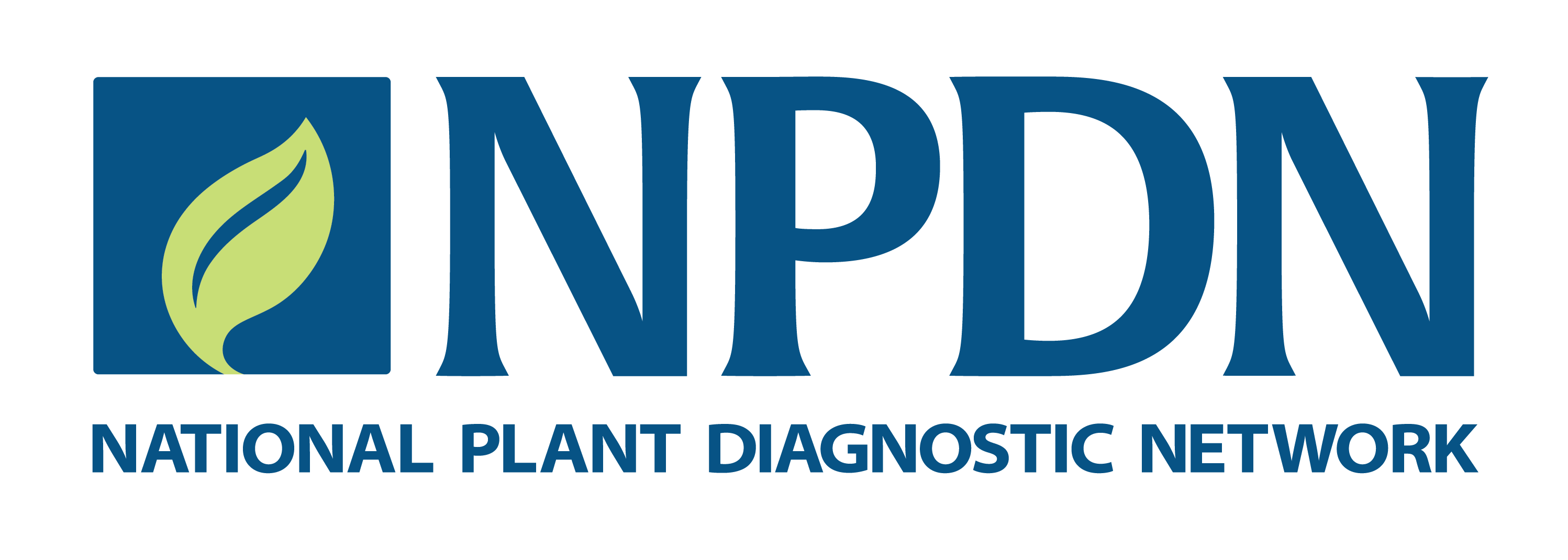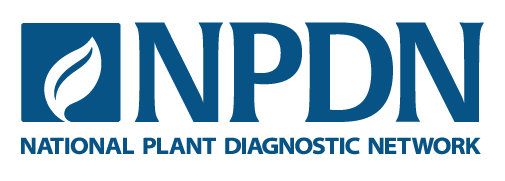LSU AgCenter Plant Diagnostic Center (SPDN)
Raj, give us a little history of your lab.
 The lab was established as a plant diagnostic clinic in 1972 and was operated mostly by plant pathology faculty with Extension appointments until 2007. I was hired in 2007 as a full-time diagnostician to run the clinic. In 2010, the clinic was transformed into a state-of-the-art Plant Diagnostic Center with a goal of providing statewide diagnostic programs for all plant health problems. The current Plant Diagnostic Center provides “one stop shopping” for the entire state of Louisiana, accepting any type of plant health problem from commercial or residential clients, as well as LSU AgCenter Extension personnel. We are working toward STAR-D accreditation.
The lab was established as a plant diagnostic clinic in 1972 and was operated mostly by plant pathology faculty with Extension appointments until 2007. I was hired in 2007 as a full-time diagnostician to run the clinic. In 2010, the clinic was transformed into a state-of-the-art Plant Diagnostic Center with a goal of providing statewide diagnostic programs for all plant health problems. The current Plant Diagnostic Center provides “one stop shopping” for the entire state of Louisiana, accepting any type of plant health problem from commercial or residential clients, as well as LSU AgCenter Extension personnel. We are working toward STAR-D accreditation.
How many people work in your lab, and what do they do?
We employ two full-time research associates. One takes care of sample processing, conducting diagnostic assays, and reporting data to the National Repository. The second assists with specific projects, such as Citrus Clean Plant Network activities and other ongoing research projects conducted in collaboration with Louisiana citrus, mayhaw, Tabasco pepper, and watermelon growers.What is your average annual sample volume, and do you charge for your services?
We average from 800 to 1,100 samples a year. We currently charge $20 for routine diagnostics. Fees for specialty testing vary from $30 to $75 per sample. We doubled our routine diagnostic fee in 2010 and immediately experienced a sharp decrease in sample submissions. The following year, the Plant Diagnostic Center was advertised in all relevant venues and sample volume improved dramatically.You mentioned specialty testing: What types of specialized testing do you offer, and what motivated you to specialize in these areas?
The Diagnostic Center routinely provides real-time detection of boxwood dieback, citrus canker, and citrus greening. We also provide molecular detection for two palm diseases, lethal bronzing and lethal yellowing, as well as rose rosette disease. These diseases are prevalent in the state and represent a significant threat to Louisiana’s fruit and ornamental industries, and this is our motivation for providing these specialized services. We also document high-impact pathogens in the state and provide that information to USDA and the Louisiana Department of Agriculture and Forestry on behalf of the LSU AgCenter.What pests and pathogens do you frequently encounter, and which ones keep you awake at night?
Phytophthora in the landscape and whiteflies in greenhouses keep me awake at night.We encounter numerous fungal pathogens. The viruses we see most frequently include TSWV, TYLCV, INSV, CMV, and rose rosette disease. Common bacterial diseases include fruit blotch, leaf spot, leaf speck, citrus canker, citrus greening, lethal bronzing, lethal yellowing, and southern bacterial wilt. Root-knot nematode is a problem in crops, and sting nematode is prevalent in turfgrass. Pests include aphids, chili thrips, fruit worms, leaf footed bugs, stink bugs, and whiteflies.
What is the best/worst part of being a diagnostician?
Plants cannot describe their ailments. The best part of being a diagnostician is playing detective by piecing the puzzle together to solve the plant crime scene. Another rewarding part is working with diverse commodities that make the job simultaneously challenging and interesting. Receiving inadequate or rotten samples is the worst part of being a diagnostician.What is one of your diagnostic lab’s most significant or proudest accomplishments?
The most significant accomplishment is when I established Colletotrichum theobromicola as the cause of boxwood dieback disease. It took me several years to prove! The most exciting part was seeing symptoms on inoculated plants after three months in the greenhouse. You all know the rest of the story!Besides diagnostics, what other activities are you or your lab involved in?
I have teaching and research responsibilities. I guest lecture courses taught in plant pathology and horticulture. I will be teaching a course titled “Plant Health Crime Scene Investigation” as part of a new LSU College of Agriculture Plant Health Management curriculum. I supervise graduate students, and we recently developed a real-time TaqMan assay for detection of C. theobromicola from symptomatic boxwood plants. I also conduct training for Master Gardeners, Advanced Master Gardeners, turfgrass and ornamental professionals and Extension agents, as well as deliver Extension seminars on disease management of various commodities grown in Louisiana.My research program focuses on diseases of citrus and mayhaw, as well as diseases and disorders of Tabasco pepper.
The Plant Diagnostic Center participates in annual surveys for sudden oak death, citrus insect and disease problems, boxwood diseases, and the Louisiana Department of Agriculture and Forestry’s annual palm disease survey. As participants in the Citrus Clean Plant Network, we also annually test 130 foundation block trees for citrus greening, citrus canker, and CTV.

